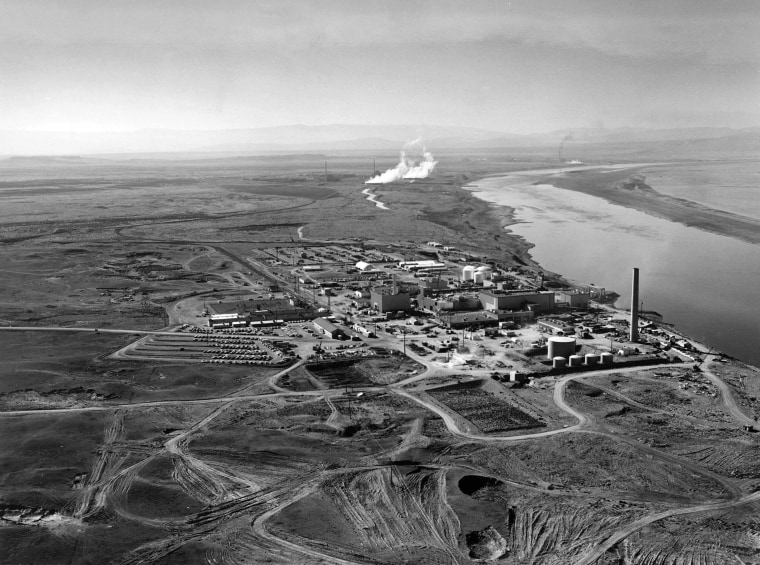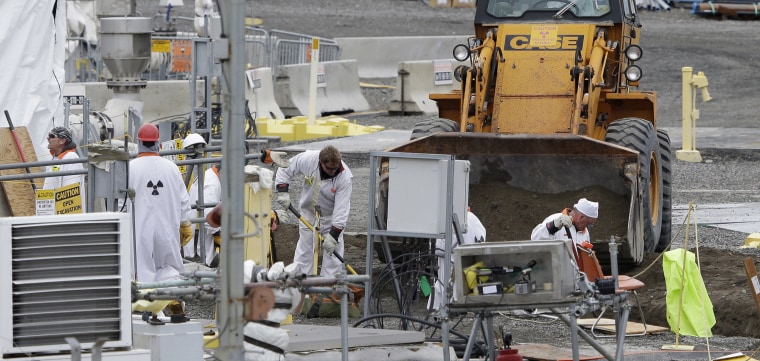WASHINGTON — The estimated cost of cleaning up America's nuclear waste has jumped more than $100 billion in just one year, according to a DOE report — and a watchdog warns the cost may climb still higher.
The Energy Department's projected cost for cleanup jumped from $383.78 billion in 2017 to $493.96 billion in a financial report issued in December 2018.
A government watchdog and DOE expert said the new total may still underestimate the full cost of cleanup, which is expected to last another 50 years. "We believe the number is growing and we believe the number is understated," said David Trimble, director of the Government Accountability Office's Natural Resources and Environment team.

The cost was calculated by the accounting firm KPMG under contract to DOE.
Eighty percent of the increase comes from new projections of the costs of cleaning up radioactive waste and hazardous chemicals at the Hanford site in southeastern Washington.
The 586-square-mile site, home to nine former production reactors and processing facilities, produced plutonium for America's nuclear arsenal during the Cold War.
Cleaning up Hanford has already cost taxpayers $170 billion over 30 years, but government auditors say the most challenging parts of the clean-up work are yet to be done.
Still not cleaned up are 56 million gallons of what the DOE's inspector general has described as "hazardous and highly radioactive waste." The rise in projected cost is due to updated estimates for building and running a waste treatment plant, including "operating costs, tank farm retrieval and closure costs" at the site, according to the report. The report also refers to changes in "technical approach or scope" and "updated estimates of projected waste volumes."
Trimble of the GAO believes the Energy Department "does not have a coherent strategic plan on how to address its cleanup mission."
A spokesperson for the Energy Department said in an emailed statement that the office that oversees the cleanup is "committed to making progress on the ground at Hanford, and mitigating the years of escalating liabilities at the site."
The spokesperson said DOE expects more cost increases "and is working with regulators and stakeholders on best options to treat and dispose of radioactive waste."
Energy Secretary Rick Perry has proposed a reclassification of the radioactive waste at Hanford to make its disposal less expensive, a suggestion opposed by environmental groups in the Pacific Northwest.
In mid-December, DOE issued a financial report with a signed letter from U.S. Energy Department Secretary Rick Perry on the fourth page. Perry's letter lists the agency's accomplishments and describes the agency's environmental cleanup activities. He cited the completion of an underground project at Hanford, but does not mention the projected increase in costs to taxpayers.
The increase is mentioned elsewhere in the report and is shown in a chart included in the report.

"Plagued with mismanagement"
For decades, government auditors have raised serious concerns about the lack of clear goals for the site and long term problems with the cleanup.
A 2018 report from the DOE's inspector general rolled up 38 investigations the IG had conducted on the environmental management efforts at Hanford.
The IG concluded Hanford has been "plagued with mismanagement, poor internal controls, and fraudulent activities, resulting in monetary impacts totalling hundreds of millions of dollars by the various contractors at the site."
Bechtel, one of the large government contractors that manages site cleanup, was part of a group of contractors that paid a $125 million settlement in 2016, the largest settlement ever obtained by the agency's inspector general.
The U.S. had alleged Bechtel improperly used federal taxpayer dollars to fund a multi-year lobbying effort in Congress to continue the funding of its contract.
Under the final settlement agreement, Bechtel National Inc. admitted no wrongdoing.
In response to the recent Energy Department report Bechtel spokesperson Fred deSousa notes that the waste treatment plant they are building in Hanford is "the most complex project of its kind in the world." DeSousa also told NBC in his statement that the project has gone through multiple independent reviews resulting in changes to its contract. "Today the project is bigger, more robust, and has more stringent operating and safety margins," he said.
The new Democratic chair of the House Energy and Commerce Committee says the committee will increase its oversight of Hanford.
"It is essential that DOE better manage and oversee its contractors to ensure that taxpayers, workers and the environment are being protected" said Rep. Frank Pallone, Jr., D-N.J. "The Committee will continue to have questions for DOE as to whether cleanup efforts at Hanford and other sites are being properly managed."
